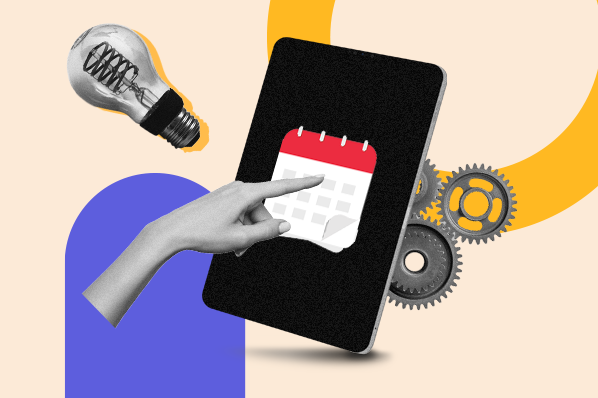In this article, you’ll get some perspective on what spiffs are, an understanding of the risks that come with them, and a better picture of how to use them effectively. And if you're in a pinch, jump to the information you need:

The concept of a spiff boils down to telling your sales reps, "If you move X amount of product or schedule X amount of demos or close X amount of deals within a fixed timeframe, you get a reward." Most spiff incentives are financial, but prizes, vacations, and recognition can all serve as the basis for an effective spiff program.
Spiffs are a powerful resource for motivating sales representatives and giving businesses a short-term boost. However, success is not guaranteed, and planning an effective spiff program isn‘t always straightforward. While it’s not an exact science, there's much to be gained from trying this formula.
Why Use Spiffs?
1. Spiffs incentivize engagement.
Employee disengagement is a very real concern for many businesses. Keeping employees invested and efficient can be a struggle. Spiffs are one way to address this issue. They have been known to encourage employee participation and lend themselves to active, competitive workplaces.
Best for: Addressing underperformance across a sales team. When team motivation is low, offering valuable incentives can help boost productivity and drive performance instead of singling out reps.
2. Spiffs are an excellent way to meet short-term sales needs.
Spiffs help businesses meet or exceed sales goals in a short period. If your business wants its reps to meet their sales quota quickly, a well-designed spiff might be the way to go.
Best for: Sales managers looking to encourage reps to take immediate action to achieve better results. Spiffs are better executed in a shorter time frame, presented as an unexpected opportunity.
Designing a spiff may be tricky to figure out, but there are certain steps you can take to ensure that your program is the best it can be.
How to Do Spiffs Right
1. Understand your goals and define them clearly.
You should know exactly what you want from your sales team and the spiff itself. Once you understand your objectives, make them abundantly clear to your reps.
No matter what it is you want to do — improve your sales pipeline, close more deals, promote a new product, or something else entirely — your reps need to know exactly what you're after to keep them on the right track and working towards what’s best for your business.
If you had a team of 15 reps, a clearly defined goal could be having them bring in at least 700 new leads by the end of the quarter cumulatively. That goal contains a clearly defined, attainable figure to serve as a reference point for how well your spiff is working.
2. Understand and articulate how your reps should achieve your goals
Your reps need to know what they are supposed to be doing and how they can earn the incentive. You need to tell them what you expect from them — be it selling specific products, scheduling more demos, or whatever else it may be that will help you reach your goals.
For example, you could instruct your team that they should bring in more leads from cold calls. That way, you can put everyone on a level playing field and incentivize them to utilize a specific sales methodology that may have worked well for your business in the past.
Your reps should also know the figure you want them to hit. If they need to bring in a fixed number of leads by the end of the quarter, ensure they know what that number is.
Tell them, “You’ll receive a $1,000 bonus if you bring in 50 cold call leads by the end of Q1,” as opposed to, “You can win a $1,000 bonus if you bring in a lot of leads this quarter.”
3. Establish who can participate.
You need to set parameters for who will be involved in the spiff. Your reps need to know whether they are eligible for the program to avoid confusion.
If you’re trying to incentivize your SDRs to each bring in 50 new leads, make the spiff specific to them and clearly define those terms. You wouldn’t want other kinds of reps foregoing their other responsibilities to participate in a spiff when you don’t need or expect them to.
4. Determine the incentives themselves.
What are the reps working towards? Is it cash? A gift card? A vacation? You need to establish what they should be looking forward to. That’ll be crucial in helping motivate your team. If they only have some vague idea of the incentive, they might not apply themselves as much as you need them to.
In our 50 leads for $1,000 example, your reps would need to know exactly how much money they were working for. Only telling them they’ll receive a bonus for their efforts likely won’t produce the results you need.
5. Figure out a timeframe.
You should have a picture of your program‘s length — for your and your employees’ sake. Spiffs are temporary. They’re for short-term sales boosts, so you and your employees need to know exactly what “short-term” means.
If you’re trying to drive your reps to bring in 50 leads each in Q1, establish that quarter as your timeframe and concretely relay those terms to them.
6. Budget properly.
The cost of spiff programs can add up quicker than you might think. You should always be conscious of how much these programs could cost and plan accordingly.
If you’re willing to offer a $1,000 bonus for your reps that bring in 50 leads, you’d better prepare to shell out that kind of money. Ensure your budget can handle several, if not all, of your reps reaching that milestone.
7. See if it was worth it.
You need to have a plan in place to measure whether or not the program was successful. You should identify the metrics that best fit your sales goals and use them as a reference point. That way, you can understand whether or not you should implement a similar spiff in the future.
The most important metric in this scenario is ROI. In our example, you would need to see if the spiff actually brought in the additional leads you were looking for, if those leads were worth the bonuses paid out, how many reps actually took the initiative to win the incentive.
Even with these steps in mind, there are still some issues you have to account for.
Potential Problems with Spiffs and How To Solve Them
1. Spiffs can lead to sandbagging.
If your sales reps know that a spiff is coming, they may wait until the program starts to close deals they could’ve closed earlier. One way to manage this issue is to have your spiff be a surprise. Don’t let your sales reps know that it’s coming. That way, you can prevent them from essentially gaming the system and potentially losing out on deals they could deliberately wait too long to close.
2. Too many spiffs can eat up your budget.
Though spiffs are good for sales in doses, there’s a reason they’re confined to short timeframes. Coordinating several spiffs can be costly, and the employee engagement they generate can have diminishing returns if your business uses too many.
Pro Tip: Try to keep spiffs infrequent — generally just once or twice a year.
3. They can create a toxic competitive work environment.
This effect is often the case with spiffs that have only one winner. Employees who are certain they can’t win may end up backing off of the competition as a whole, and this kind of “all or nothing” mentality may create tension between sales reps. One way to address this issue is to offer incentives that all employees can reach. For instance, you could
Pro Tip: Try to make a realistic reward for any employee exceeding their quarter's sales quota. This way, anyone can win an incentive, and no one feels excluded from a shot at success.
Engage Your Sales Team with a Spiff
Like I said, planning a spiff might not be straightforward. There are many moving parts to consider, and the exact recipe for a successful program may vary from business to business. That being said, there are steps you can take, problems you can look out for, and solid starting points to reference for planning a spiff that suits you and your business well.
Editor's note: This article was originally published in January 2020 and has since been updated for comprehensiveness.
Sales Motivation





.webp)






